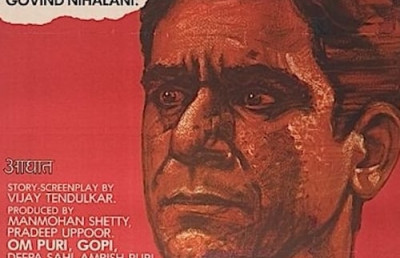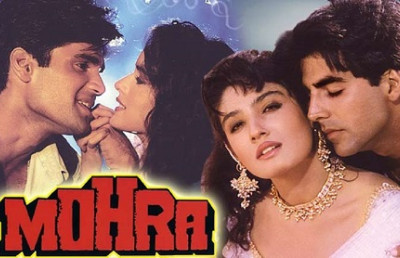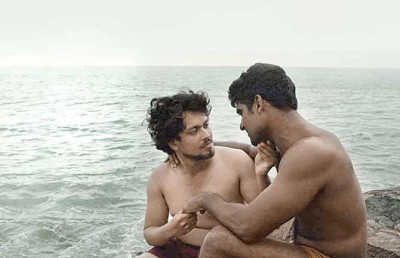A Patriarchal Mousetrap: Analysing Gender in Anuraj Manohar’s Ishq

Ishq (AVA Productions)
Ishq (Anuraj Manohar, 2019) is a Malayalam 1 movie concerned with patriarchy and the moral policing that it perpetuates. The film’s director manipulates the mise-en-scène, in particular through the use of pinks and blues and the framing of specific scenes, in order to reflect and comment on patriarchal structures in India and the binary gendered roles they insist on.
Ishq focuses on a young couple, Sachi, short for Sachidanandan (Shane Nigam), and Vasudha (Ann Sheetal), who are forced to deal with the realities of patriarchy and whose relationship is tested as they negotiate their identities as a “man” and “woman.” The movie highlights the problems with toxic masculinity, where women are forced into passive positions as unwilling witnesses to, or victims of, fights between males. Manohar presents these negotiations of gender visually through his use of colour. Traditionally, pink has been associated with “femininity” and blue with “masculinity.” In the film, these associations are referenced in the use of pink and blue lights and in the colours of the characters’ clothing.
Blue and pink lights are used extensively to indicate which gender is dominant in a scene. At first, Sachi and Vasudha are dressed in white to show their innocence. As the movie begins, Vasudha and Sachi talk to each other over the phone, with shots of Vasudha featuring both pink and blue, while shots of Sachi, unconventionally, are dominated by pink. Later, as they drive together, the cross on the rear-view mirror of the car, turns pink and blue alternately as lights reflect on it. There is no obvious relationship between gender and the colour of the cross; it can be either pink or blue whether the camera is on Vasudha or Sachi. However, what this expresses is that at this point in their relationship, neither of them is dominating the other and the audience is presented with a couple that seem to genuinely love and care for each other. This alternation of colours continues until the point where they almost kiss.
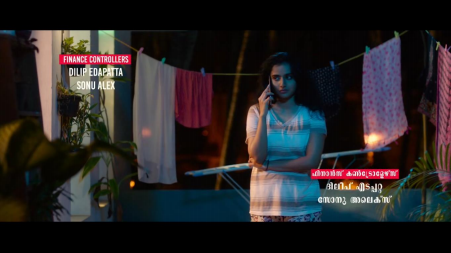
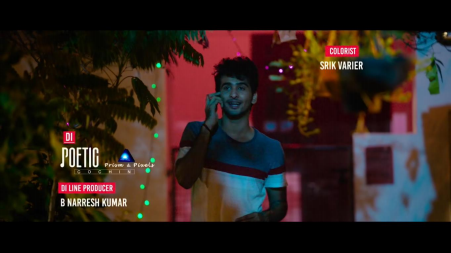
Ishq (AVA Productions)
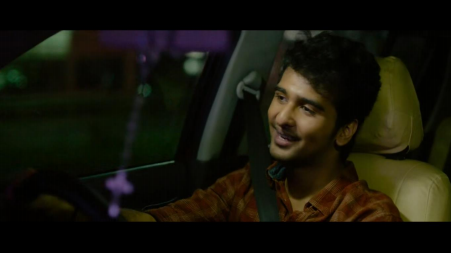
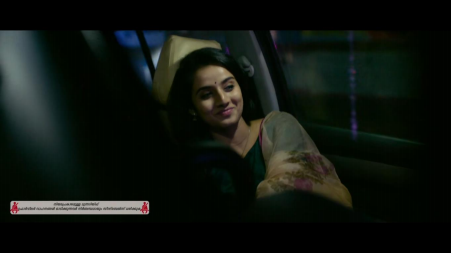
Ishq (AVA Productions)
he expressive use of colour also acts as a critique of the traditional association of gender with specific colours as well. The constant alternation of colours in the scenes where Vasudha and Sachi are on healthy terms is a way of representing how neither of them ascribe to traditional societal understandings of gender which insists that certain traits are strictly “feminine” and others strictly “masculine.” Further, though many contemporary societies consider blue “masculine” and pink “feminine,” there have been many societies that, historically, associated pink with boys and blue with girls because pink was considered “stronger” while blue was thought to be “delicate, dainty and prettier” (Frassanito and Pettorini 881). By consciously avoiding the association of characters with gendered colour codes, the film is suggesting that the association of specific character traits and societal roles with gender is similarly irrational and illogical.
However, this alternation of colours stops once they come into contact with the men masquerading as police who harass them for their “immorality.” After this experience, Vasudha’s bedsheet, which in an earlier scene was blue and white, is now pink and white, while Sachi’s is blue and white. The couple, whose healthy relationship was not up to that time affected by gender, become aware of it after the incident and now begin to expect each other to conform to traditional gender norms. During the confrontation, as soon as Alwin, the more forceful of the two policemen, catches the couple in the back seat of their car, the cross on their windshield turns blue and remains that colour for the rest of the sequence. This can be seen as a foreshadowing of how, from this point onwards, the problems of toxic masculinity take over the narrative. The narrative is now dominated by conversations between men. Even though they are arguing about a woman, she has no voice.
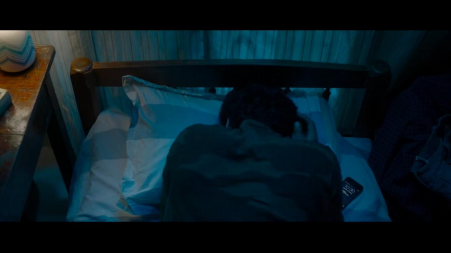
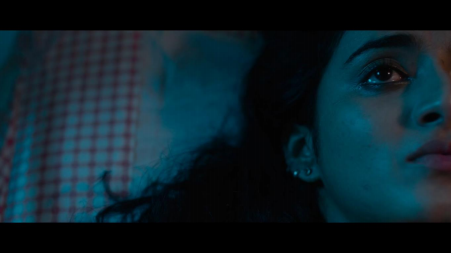
Ishq (AVA Productions)

Ishq (AVA Productions)
The three major male characters, Sachi, Alwin, and Mukundan (the other fake policeman), are, in their own ways (or at least in their own minds), “protecting” the woman; more precisely, they are protecting the idea of feminine chastity. Sachi does not want the police to get involved, nor does he want the incident to become public because he is afraid it will, to borrow a Victorian phrase, ruin her reputation, and possibly affect how people see him as well. Alwin believes Vasudha and Sachi have transgressed the social code of conduct and, as a consequence, Vasudha should be punished for not protecting her chastity appropriately until marriage. Mukundan, on the other hand, claims to believe that while Vasudha is, of course, wrong in not remaining chaste, she should be given a second chance and the incident should not be made public. All three of the major male characters believe they are acting nobly, according to their own ideas and the framework created by patriarchy.
Although the conflict centres on Vasudha and her breaking of patriarchal norms, the discussion never includes her and her voice goes unheard. The filmmaker uses framing and camera angles to underline this central truth. For example, when the three men enter the car with Vasudha, Vasudha is completely hidden from view by Mukundan’s seat. At this point, she does not exist as a human, but is a mere gendered figure whose individual agency has been violated, silencing her. She does not speak again for an extended period, not until Sachi asks what happened between her and Alwin.
Pink and blue are used elsewhere in the film for expressive purpose. The interior of Sachi’s house is mostly pink, but the exterior is blue. This predominance of pink reflects the nature of Sachi’s family. Sachi lives with his mother and sister, and his house is a space dominated by women. It is Sachi’s mother who is the household’s major decision maker. On the other hand, Alwin’s house is painted blue both inside and outside, reflecting the different family structure. Alwin is a patriarchal figure who, like Sachi, lives with two women. However, in this case it his wife and daughter, and Alwin dominates this space (the exception is the traditional women’s space of the kitchen, which is not blue). In contrast to both Sachi and Alwin, Vasudha’s hostel uses both pink and blue. There may not be a male patriarchal figure to dominate this space, but the warden, despite being a woman, serves as a guardian to traditional patriarchal values. Although she never appears onscreen, the nature of the hostel and its rules is revealed when Vasudha calls her warden to tell her that she would not be returning to the hostel that night. The excuse she uses is that she is going home and not that she is going out with her friend. It is clear that the only acceptable reason for her to not sleep at the hostel is being with her family. However, this does not mean that it is as strict a patriarchal space as Alwin’s house. If Vasudha is able to lie and get away with it, it is because the hostel is a space that provides at least some flexibility. For example, her warden trusts and does not call her parents to check if Vasudha is telling the truth. This suggests that young single women have at least some freedom to negotiate traditional norms that is completely absent for married women, such as Alwin’s wife Maria.
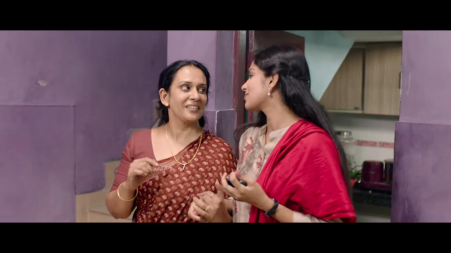

Ishq (AVA Productions)

Ishq (AVA Productions)
Gonca Uncu Cimen and Gülsüm Çalışır (2018) argue that the identification of pink with females becomes a fixed label, and includes characteristics such as “obedient”, “tender-hearted”, “weak”, and “dependent,” which women are expected to conform to.
The clothes the film’s characters wear have a direct correlation to the extent they conform to patriarchal gender norms. All the prominent female characters, including Vasudha, Maria, and Sachi’s mother and sister, wear pink at some point. Vasudha wears pink until, after the incident, when Sachi calls her asking for a meeting. Before this, she is seen trying to reach him and work on their relationship, as is expected of a woman. However, once Sachi calls her, she wears black, which can be seen as a colour of resistance. She is wearing black when she rejects Sachi’s proposal and shows him the middle finger, – very unlike the behaviour expected of a “good girl.” As Wei, Cheng-Yu., Nevenka Dimitrova and Fu Chang (2004) write that black also stands for hatred (2). This is an important plot shift as Sachi and Vasudha, who until now were shown very much in love, begin to hate each other.
Alwin’s wife Maria, on the other hand, wears a saree that covers her in pink from head to toe. She is a typical wifely figure, and even though she works, it is as a nurse, a profession that is usually gendered as female. Even more important, she is also a mother. She is submissive and supports Alwin until she finds out that there is another woman involved. It is only at this point that she turns on her husband to find out the truth. Sachi’s mother has an alternative negotiation with patriarchy which is reflected in her costumes. While she is a mother who cares for and looks after her children, she is not the cliché of the emotional, motherly figure. In the early scene where Sachi talks to her about Vasudha, she treats it casually, which is wildly atypical for Indian mothers. In this conversation, she wears a brown saree. However, in a later scene where she is concerned about when Sachi will return so that they can go shopping for her daughter’s engagement, expressing a concern for both of her children, she is wears a pink saree, and is framed between two pink building, in this instance conforming to the patriarchal stereotype of a mother.

Ishq (AVA Productions)
If the clothes worn by the female characters are almost always pink, this is not a generalization that can be made about the male characters with respect to blue. The man who stares at Vasudha at Indian Coffee House and Sachi are the only male characters who wear blue. Sachi is in blue when he is doing the chores related to his sister’s engagement like a brother is expected to. However, Sachi does not wear the colour again until after the incident at the parking lot. Until this point, he is not the typical masculine figure patriarchy expects him to be. He is as scared as Vasudha during the parking lot confrontation and quickly gives in to Alwin and his companion’s demands. He is not the heroic male he is supposed to be, but as much a victim as Vasudha. However, after the incident, the norms of toxic masculinity take over as he becomes obsessed with the question of Vasudha’s chastity. The original sensitive Sachi is now replaced by a Sachi obsessed about knowing whether Vasudha is still “pure,” which is visually expressed by him now wearing blue.
For the filmmaker, the expressive use of colour is a key film technique in telling his story. Uses it to reflect on India’s patriarchal structure and comment upon how women and, to a large extent, men, continue to remain trapped in its structures.
Works Cited
Cimen, Gonca Uncu and Gülsüm Çalışır. “Gender of Color: When Did Girls and Boys Start to Wear Pink and Blue?”, Studies on Balkan and Near Eastern Social Sciences, Volume 2, 2018, Peter Lang GmbH, pp. 281 – 287. Research Gate, https://www.researchgate.net/publication/331149756GenderofColorWhenDidGirlsandBoysStarttoWearPinkandBlue. Accessed on 29th November 2019.
Ishq. Directed by Anuraj Manohar, AVA Productions and E4Entertainment, 2019.
Mathew, Ruth Susan. “'Ishq: not a love story' review: A scathing indictment of moral policing”. 17 May 2019. The Week.
https://www.theweek.in/review/movies/2019/05/17/Ishq-not-a-love-story-review-A-scathing-indictment-of-moral-policing.html. Accessed on 24 February 2020.
Wei, Cheng-Yu., Nevenka Dimitrova and Fu Chang. “Color-mood analysis of films based on syntactic and psychological models”, IEE International Conference on Multimedia and Expo (ICME), Vol. 2, 2004, pp. 1 – 4. Research Gate, https://www.researchgate.net/publication/4124758Color moodanalysisoffilmsbasedonsyntacticandpsychologicalmodels. Accessed on 29th November 2019.
Notes
- Malayalam is the Dravidian language spoken in the Indian region of Kerala ↩



